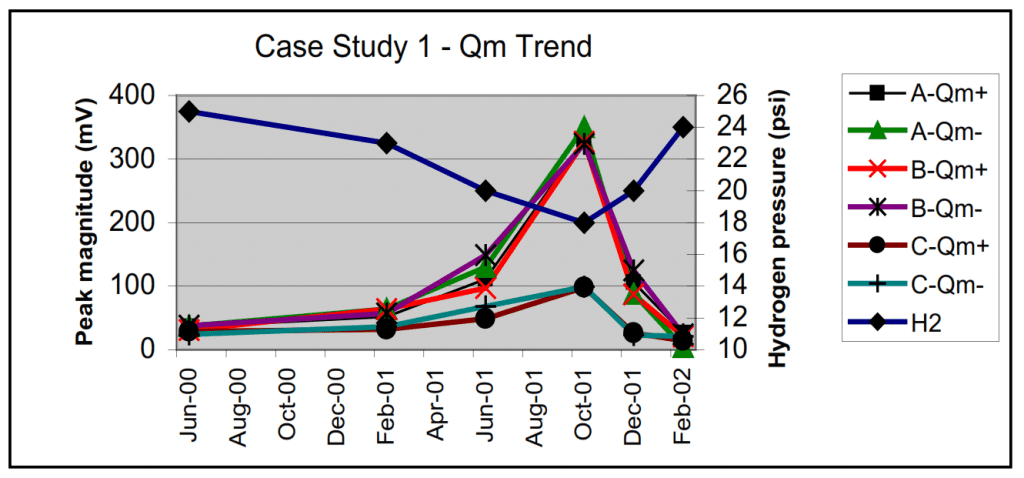On-Line Partial Discharge Measurement in Hydrogen-Cooled Generators
G.C. Stone, C. Chan, H.G. Sedding Iris Power – Qualitrol, Mississauga, Ontario, Canada
ABSTRACT
Turbine generators in nuclear, coal, oil and some gas-fired power plants are normally rated above a few hundred megawatts. Such machines tend to be hydrogen-cooled (and above 500 MW or so, both direct-water and hydrogen-cooled). Hydrogen-cooling has many advantages, but one of the important features is the suppression of partial discharge (PD) activity by the hydrogen gas at high pressure. On-line PD testing is widely used to determine the condition of the insulation in air-cooled windings, but there has been some controversy about the effectiveness of on-line PD testing to detect insulation problems in hydrogen-cooled machines.
This paper will present a statistical summary of on-line PD measured on over 1000 hydrogen-cooled turbine generators, together with some specific case studies. It seems clear that on-line PD can detect problems such as loose windings in the stator slot, and electrical tracking due to severe, partly-conductive pollution. However, other issues do not seem to be detected. For the same amount of deterioration, the PD levels appear to be lower in the hydrogen- cooled machines, compared to air-cooled machines.
Keywords: Partial Discharge, Hydrogen-Cooled Windings, Stator Winding Insulation





